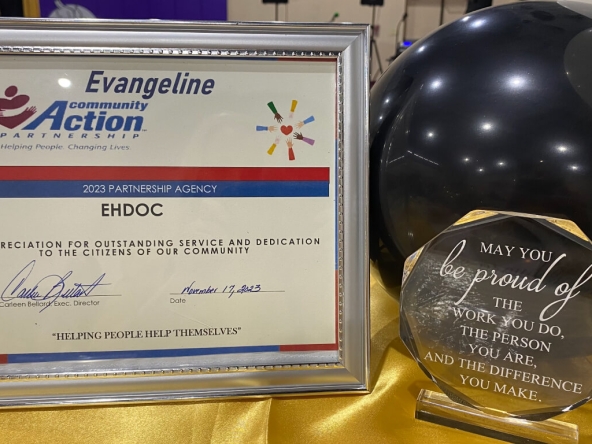Staying Safe As Your City Reopens: Friends And Neighbors May Be Resuming Their Regular Activities—Should You?
Cities and counties across the country are beginning to ease or even end the regulations that closed stores, restaurants, businesses, services, and schools back in March 2020. But adults 65 years and older and those with chronic health conditions are still at high risk for contracting COVID-19 and facing its most serious complications, including death.
If you have underlying medical conditions, particularly if they are not well controlled, the CDC suggests that it’s wise to continue to maintain the highest level of vigilance about going out and resuming your regular activities. Some of the specific underlying health conditions noted by the CDC include:
- Chronic lung disease
- Moderate to severe asthma
- Serious heart conditions
- Being “immunocompromised”
- People who are immunocompromised have a reduced ability to fight infections and other diseases. Many things can cause a person to be immunocompromised, including cancer treatment, smoking, bone marrow or organ transplantation, immune deficiencies, poorly controlled HIV or AIDS, and prolonged use of corticosteroids and other immune weakening medications.
- Severe obesity (body mass index [BMI] of 40 or higher)
- Diabetes
- Chronic kidney disease and undergoing dialysis
- Liver disease
You can’t reduce your chances of contracting COVID-19 to zero. But if you understand the risks and use proven prevention measures, you may be able to help reduce the spread of the virus.
KEEP IN MIND: If you have COVID-19, have COVID-19 symptoms, or have been in close contact with someone who has COVID-19, you must stay home and away from other people. Talk to your healthcare provider about your specific precautions. When you can leave home and see others depends on different factors for different situations. Follow the CDC’s recommendations for your circumstances.
Here is the CDC’s science-based guidance for the best way to protect yourself as you begin to resume daily activities:
Before you venture out, ask yourself: Will my activity put me in close contact with others?
- Practice social distancing (staying at least 6 feet away from others). COVID-19 spreads mainly among people who are in close physical contact with others.
- Stay home if sick.
- Use online services when available.
- Wear a cloth face covering when running errands.
- Use hand sanitizer after leaving stores.
- Wash your hands with soap and water for at least 20 seconds when you get home.
Protect yourself while shopping.
- Order food and other items online for home delivery or curbside pickup (if possible).
- Only go to the grocery store, or other stores selling household essentials, in person when you absolutely need to. This will limit your potential exposure to others and the virus that causes COVID-19.
- Stay at least 6 feet away from others while shopping and in lines.
- Cover your mouth and nose with a cloth face covering when you have to go out in public.
- When you do have to shop in person, go during the early morning or later at night when fewer people will be there.
- If you are at higher risk for severe illness, find out if the store has special hours for people at higher risk. If they do, try to shop during those hours. People at higher risk for severe illness include adults 65 or older and people of any age who have serious underlying medical conditions.
- Disinfect the shopping cart. Use disinfecting wipes if available.
- Do not touch your eyes, nose, or mouth.
- If possible, use touchless payment (pay without touching money, a card, or a keypad). If you must handle money, a card, or use a keypad, use hand sanitizer right after paying.
Use hand sanitizer.
After leaving a store or completing an activity or task outside, use hand sanitizer.
Exercise caution when using public bathrooms
Bathrooms have a lot of high touch surfaces, including door handles, faucets, and stall doors. Viral transfer risk in this environment can be high. A recent report in the New York Times suggested that the virus can be transferred when the toilet is flushed. If possible, close the lid before flushing a public toilet. Wash your hands thoroughly for at least 20 seconds or use hand sanitizer if hand washing is not possible. Avoid using automatic hand dryers. Keep your cloth face covering on when in the restroom.
Wash hands at home
When you get home from being outside or around others, wash your hands with soap and water for at least 20 seconds.
Be smart about deliveries & takeout.
- Use delivery services when possible and limit in-person contact if possible.
- If possible, pay online or on the phone when you order.
- Accept deliveries without in-person contact whenever possible. Ask for deliveries to be left in a safe spot outside your house (such as your front porch or lobby), with no person-to-person interaction. Otherwise, stay at least 6 feet away from the delivery person.
Wash your hands or use hand sanitizer after accepting deliveries or collecting mail.
- After receiving deliveries or bringing home takeout food, wash your hands with soap and water for 20 seconds. If soap and water are not available, use a hand sanitizer with at least 60% alcohol.
- After collecting mail from a post office or home mailbox, wash your hands with soap and water for at least 20 seconds or use a hand sanitizer with at least 60% alcohol.
Adjust how you do your banking.
- Ask about telephone or virtual options for banking services.
- Bank online whenever possible.
- Use drive-thru banking services, automated teller machines (ATMs), or mobile banking apps for routine transactions that do not require face-to-face assistance as much as possible.
- Look for any extra prevention practices being implemented by the bank, such as plexiglass barriers for tellers or bankers, staff wearing cloth face coverings, or physical distancing signs in the lobby.
- Wear a cloth face covering when making any in-person transactions where you are unable to stay at least 6 feet apart from other people. Make sure that bank employees and other people inside the bank are also wearing cloth face coverings.
- Use hand sanitizer containing at least 60% alcohol after any deposit, withdrawal, exchange, drive-thru visit, or use of an ATM.
- Wash your hands thoroughly when you return.
Play it safe when getting gas.
- If available, use disinfecting wipes on handles and buttons before you touch them.
- After fueling, use a hand sanitizer with at least 60% alcohol. Wash your hands for at least 20 seconds when you are able to access soap and water.



